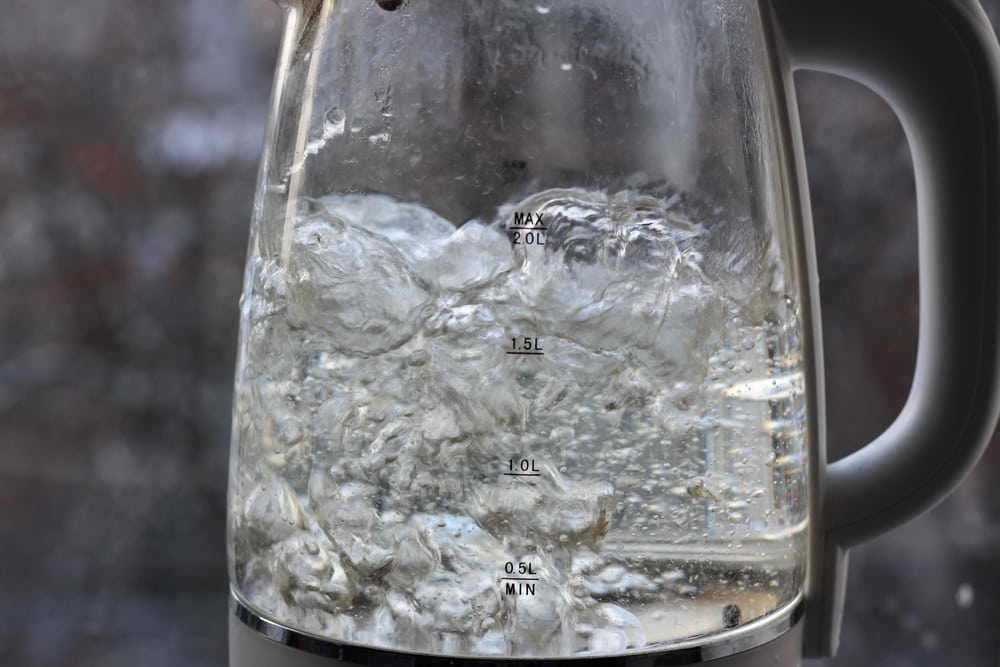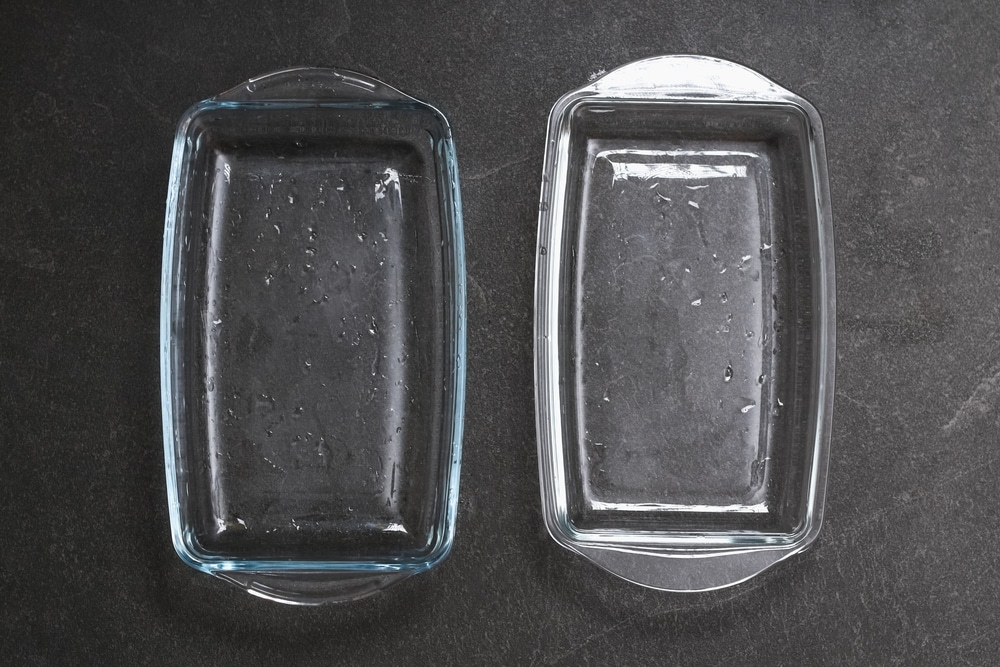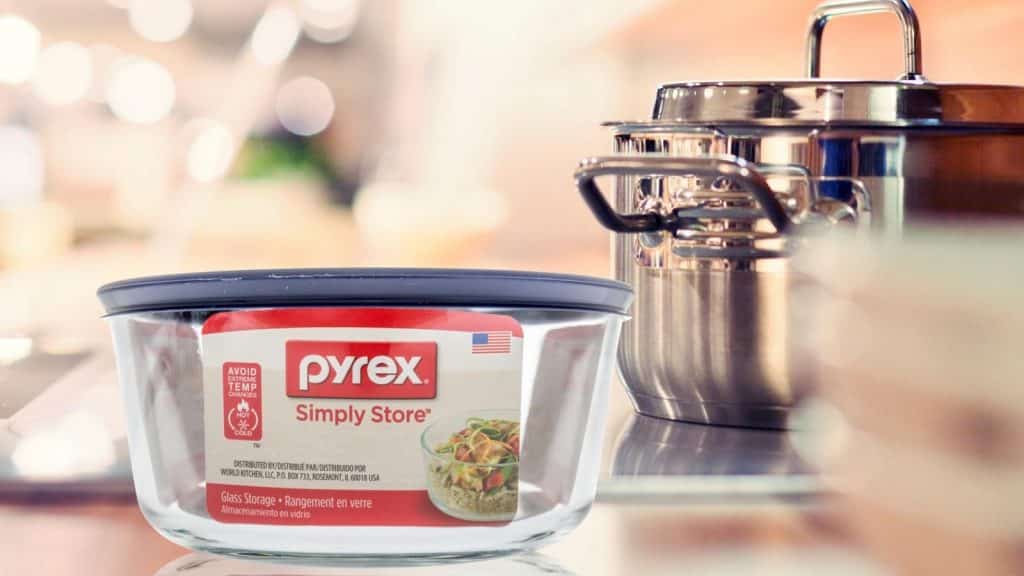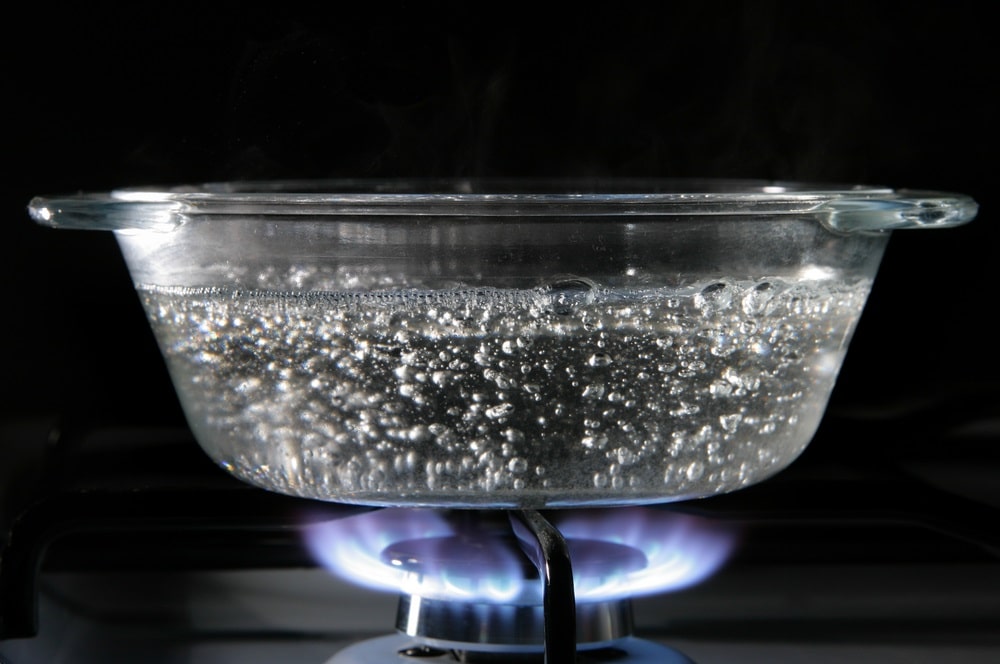
Pyrex is a popular brand of cookware originally developed by a company known as Corning way back in 1915. This tempered glass cookware has stood the test of time and can be found in many modern kitchens.
What makes Pyrex different to glass?
Pyrex is produced by a method that tempers the glass, giving it different properties from ordinary glass. For one, Pyrex is four to six times stronger than normal glass.
It is also more heat resistant and can withstand temperatures up to 425 degrees Fahrenheit (218 degrees Celcius). This makes it perfect for oven or microwave cooking.
Because of this heatproof property, you may be wondering if it is safe to put boiling water into Pyrex dishes or jugs. Keep reading because we have the answers to keep you safe.
A second property that makes Pyrex different to glass is the way it breaks. It shatters into small cubes very much like the safety glass in a motor vehicle. These have a much lower chance of causing severe injury.
Normal glass, on the other hand, breaks into sharp shards that are extremely dangerous.
Ordinary glassware is unsuitable for most kitchen use because it doesn’t have heat-resistant properties. Sudden temperature changes will cause the glass to shatter such as when you pour boiling water into a glass jug.
So, can you put that same boiling water into a Pyrex jug or dish?
Can You Put Boiling Water In Pyrex?
Pyrex is safe to use with hot or even boiling liquids and can safely be used in the oven at normal cooking temperatures. However, you still need to be careful not to subject it to sudden changes in temperature.
For instance, let’s say you have frozen a meal in a Pyrex dish. Do not put this meal directly from the freezer into a hot oven. The sudden temperature change will cause the dish to shatter.
Rather let the dish defrost first, either in the fridge or in the microwave. Once it is at room temperature, it will be safe to put it into the oven.
Likewise, it is safe to pour boiling water into a room-temperature Pyrex dish or jug but if the container is ice cold, the sudden heat will break the dish. (This is known as “thermal shock.”)
Rather warm the Pyrex up first with warm tap water, and then you can add the boiling water.
Tips to prevent shattering your Pyrex
1. First of all, you can pour boiling water or other liquids into your pyrex bowls or pans but you must do it slowly. Pour a small amount into the bottom of the dish or jug then give it a few seconds to adjust.
This is because it helps allow the material to adapt to the temperature, which reduces the chances of damage caused by thermal shock.
2. Secondly, you can put a metal spoon into the pyrex bowl before pouring the boiling water in. This works because metal is an excellent conductor.
Instead of pouring the water directly into the bottom of the jug or bowl, pour it onto the back of the spoon. As a result, the Pyrex container will be safe from breakage.
3. Thirdly, you can try warming up your Pyrex bowls before putting the boiling water into them. This is because the bowls and dishes at room temperature or slightly warmer will not suffer thermal shock from too fast expansion.
Never pour boiling water into ice-cold Pyrex bowls!
Warnings from the Pyrex company
While Pyrex can certainly withstand extremes of temperature, it cannot handle sudden temperature changes.
The company’s own website has this to say:
“Avoid sudden temperature changes to glassware, DO NOT add liquid to hot glassware; place hot glassware on a wet or cool surface, directly on a countertop or metal surface, or in the sink; or handle hot glassware with a wet cloth.”
To prevent any other form of heat shock from shattering your precious Pyrex, here are a few more things to avoid when using it.
- Never put a hot glass Pyrex dish directly onto a cold marble or granite worktop.
- Never put dry food like chicken pieces onto a Pyrex dish and put it into the oven. This is because the glass will heat up quickly, and then the food will release cool juices which will come into contact with the glass, possibly cracking it. The Pyrex website recommends adding a little liquid to the bottom of the dish before putting the food in and cooking it.
- Make sure that all dishtowels and oven gloves used when handling the Pyrex are bone dry. For a start, wet fabric conducts heat so your hands will get burned. Also, the wet fabric will be cold and it may cause heat shock to the hot Pyrex dish. In the same vein, never take a hot Pyrex dish out of the oven and put it onto a wet cloth or dishtowel.
- Don’t use a Pyrex dish for cooking directly on the stovetop whether it is gas or electric. You may use it in the oven but the sudden heat of a hob will shatter the dish.
To conclude
We hope this article has reassured you that yes, it is safe to put boiling water into your Pyrex dishes but you need to do it correctly. If looked after carefully, Pyrex can be passed on to your children and their children after them!



